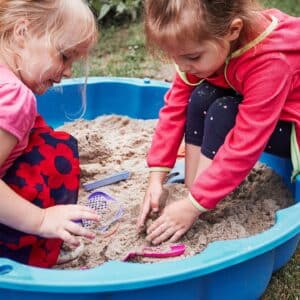We all want to provide the best possible environment for our children to learn, grow, and thrive. One of the most powerful tools we have at our disposal is play. Play is not just a fun activity, but an essential part of a child’s growth and development. In this article, we will explore the power of play and how it can support children’s speech and language development. We will also provide ideas, strategies, and tips for parents on how to maximize their child’s play experience and enrich their language.
Definition and Importance of Play
Play is any activity that is enjoyable, voluntary, and intrinsically motivated. From birth through adulthood, play has many benefits, including cognitive, language, social, emotional, and physical.
Through play, children can observe, explore, experiment, interact, communicate, and learn new skills in a fun and engaging way. They can express themselves using more than just words.
Types of Play
Play comes in various forms, each offering unique benefits. Here are some of the different types of play:

- Physical Play: This involves activities that use physical movements, like running, jumping, climbing, and dancing. It helps children develop gross motor skills, coordination, and physical fitness. Physical play also provides opportunities for children to learn about their bodies and the physical world around them.
- Social Play: This type of play occurs when children interact with others, including peers, siblings, or adults. Social play helps children develop language, communication, and other interpersonal skills such as sharing, cooperation, negotiation, and empathy. It’s crucial for learning social rules and understanding how to communicate and interact in group settings.
- Solitary Play: When children play alone, they engage in solitary play. This form of play is important for fostering independence, creativity, self-reflection, and an understanding of how things work. It allows children to explore their interests at their own pace.
- Constructive Play: This involves creating or constructing something and is often seen when children play with blocks, Legos, puzzles, or engage in arts and crafts. Constructive play develops language and communication, fine motor skills, problem-solving abilities, and creativity. It also helps children understand spatial relationships and cause and effect.
- Fantasy or Pretend Play: Children engage in fantasy play when they enact scenarios, often involving role-playing and make-believe. This type of play is crucial for developing imagination, creativity, and language skills. It allows children to experiment with different social roles and scenarios, enhancing their understanding of the world.
- Exploratory Play: This type of play involves children exploring their environment, often leading to discovery and learning. It includes activities like touching, feeling, hearing, smelling, tasting, and manipulating objects to learn about their properties. Exploratory play is key for language and cognitive development and understanding of the physical world.
- Symbolic Play: In symbolic play, children use objects, actions, or ideas to represent other objects, actions, or ideas, as in using a stick as a sword or a box as a car. This play type is important for developing language and thinking skills, as it involves understanding and using symbols.
- Rule-Based Play: This emerges in older children and involves games with structured rules or guidelines, like board games, card games, or sports. Rule-based play helps children understand and follow directions and rules, take turns, develop strategic thinking, and learn about fair play and competition.
Each type of play contributes uniquely to a child’s development, helping them acquire vital language, physical, social, cognitive, and emotional skills. Encouraging a variety of play types is important for a well-rounded developmental experience.

Engagement During Play
Engagement is a crucial aspect of play. When children are engaged in play, they are focused, motivated, and interested in the activity.
As a parent, you can support your child’s engagement by allowing their interests to direct the play and being attentive, engaged, responsive, and communicative during play. You can also provide a safe and stimulating environment that encourages curiosity, exploration, expression, and creativity.
Responsiveness and Play
Parent responsiveness is the ability to recognize and respond to your child’s needs, communication, and cues. It is a critical factor in nurturing play, as it helps children feel motivated to play, safe, secure, and valued.
By being responsive to your child’s actions and communication during play, you can support their engagement, promote their speech, language and overall learning, and strengthen your bond.

Parent Modeling and Play
Parent modeling refers to the behavior and language parents demonstrate during play. By modeling language and play behaviors, parents can complement their child’s play and show them new ways to expand their play, explore, and communicate.
A few ways parents can model during play include demonstrating actions, using responsive and descriptive language, and demonstrating turn-taking and cooperation.
Imitation During Play
Imitation is the act of copying another person’s behavior. It is an essential part of play, as it validates what a child does and allows them to learn new skills and behaviors.
Parents can encourage imitation during play by using language, demonstrating simple actions and behaviors that their child can copy, as well as imitating their child’s language and actions. Imitation promotes social interaction as well as cognitive and communication skills.
Repetition and Play
Repetition is the act of repeating an activity or behavior. It is a critical aspect of play, as it helps children master new skills and concepts. Repetition also promotes memory and allows children to practice and reinforce their learning.
Parents can model and encourage repetition of actions and language during play to help their child build confidence, expand their language, and deepen their understanding of the world around them.
Turn-Taking and Cooperation in Play
Turn-taking and cooperation are important skills that children learn through play. By taking turns and working together towards a common goal, children can develop their social, communication, and problem-solving skills. These skills are essential for success in social interactions, school, work, and life.
Parents can encourage turn-taking and cooperation during play through modeling, using cues, providing gentle prompts, and offering encouragement.
Encouraging Your Child’s Play
Parents can encourage their child’s play by providing a safe and stimulating language-rich environment, gearing play to their child’s interests and developmental level, offering a variety of play materials and activities, and being flexible, present and attentive.
Follow Your Child’s Lead
Another very powerful strategy is to follow the child’s lead, which means allowing them to choose the activity, set the pace, and direct the play. Following a child’s lead promotes creativity and independence and supports a child’s motivation to communicate, learn and growth.

Cooperative Play vs. Independent Play
Cooperative play involves working together towards a common goal, such as building a tower or playing a game. It promotes social interaction, communication, and problem-solving skills.
Independent play, on the other hand, involves children playing alone or engaging in individual activities. This type of play supports creativity, self-expression, and independence. Both types of play are important for a child’s growth and development.
Involving Siblings and Peers in Play
Incorporating siblings and peers into play offers countless opportunities to develop play and communication skills through observation, modeling, imitation, repetition, and practice. And this all happens while having fun. Through play with peers and siblings, children can expand their understanding and use of language, and practice social language skills such as turn taking. This can also boost confidence, foster a sense of belonging, and promote relationships.
Music, Movement, Art, and Play
Music, movement, and art play can also be used to support speech and language development. Parents can use activities such as listening to music, dancing, singing, and playing musical instruments, to help their child develop rhythm, vocabulary, speech sound, imitation skills, turn taking, and more.
Similarly, art activities, such as drawing, painting, sculpting, and crafts stimulate imitation, direction following, planning and sequencing, spatial concepts, vocabulary development, creativity, self-expression, and more.
FAQs
- How can I encourage my child’s engagement during play?
- Parents can encourage their child’s engagement during play by being attentive and engaged, showing responsiveness, providing a safe and stimulating environment, following their child’s lead and interests, and offering a variety of interest and developmentally appropriate play materials and experiences.
- What is the difference between cooperative play and independent play?
- Cooperative play involves a child working with someone else towards a common goal, while independent play involves children playing alone or engaging in individual activities.
- How can I adapt play for my child with mobility concerns?
- Parents can adapt play for their child with mobility concerns by making the play experience accessible, using a variety of forms of communication, modifying play activities, and providing a safe play environment.
- What are some examples of social play?
- Social play involves interacting with others, such as playing peek-a-boo, singing songs, building cooperatively, and engaging in pretend play with others.
Additional Resources
- Activities to Encourage Speech and Language Development (asha.org)
- Let’s Play: How Your Child Learns and Grows Through Play from Birth to Three | ZERO TO THREE
- Reinforcing Language Skills for Our Youngest Learners | NAEYC
- Talking with Parents about Play and Learning | NAEYC
- Play Your Child’s Way! (hanen.org)
- Early Communication Development & Down syndrome, Boston Children’s Hospital
Summary/Conclusion
Play is essential for children’s growth and development. It provides parents many chances to enhance their child’s speech, language, and communication skills. To support this development, it’s important for parents to be actively involved and responsive during play, make play easily accessible, and align with their child’s interests. Allowing the child to lead the play, including siblings and peers, and choosing activities that match the child’s developmental stage can create a wide range of play experiences. These experiences are beneficial not only for language development but also for enhancing learning, sparking creativity, and improving social skills. Engaging in various types of play is an effective way for parents to help develop their child’s communication abilities and overall growth.




0 Comments